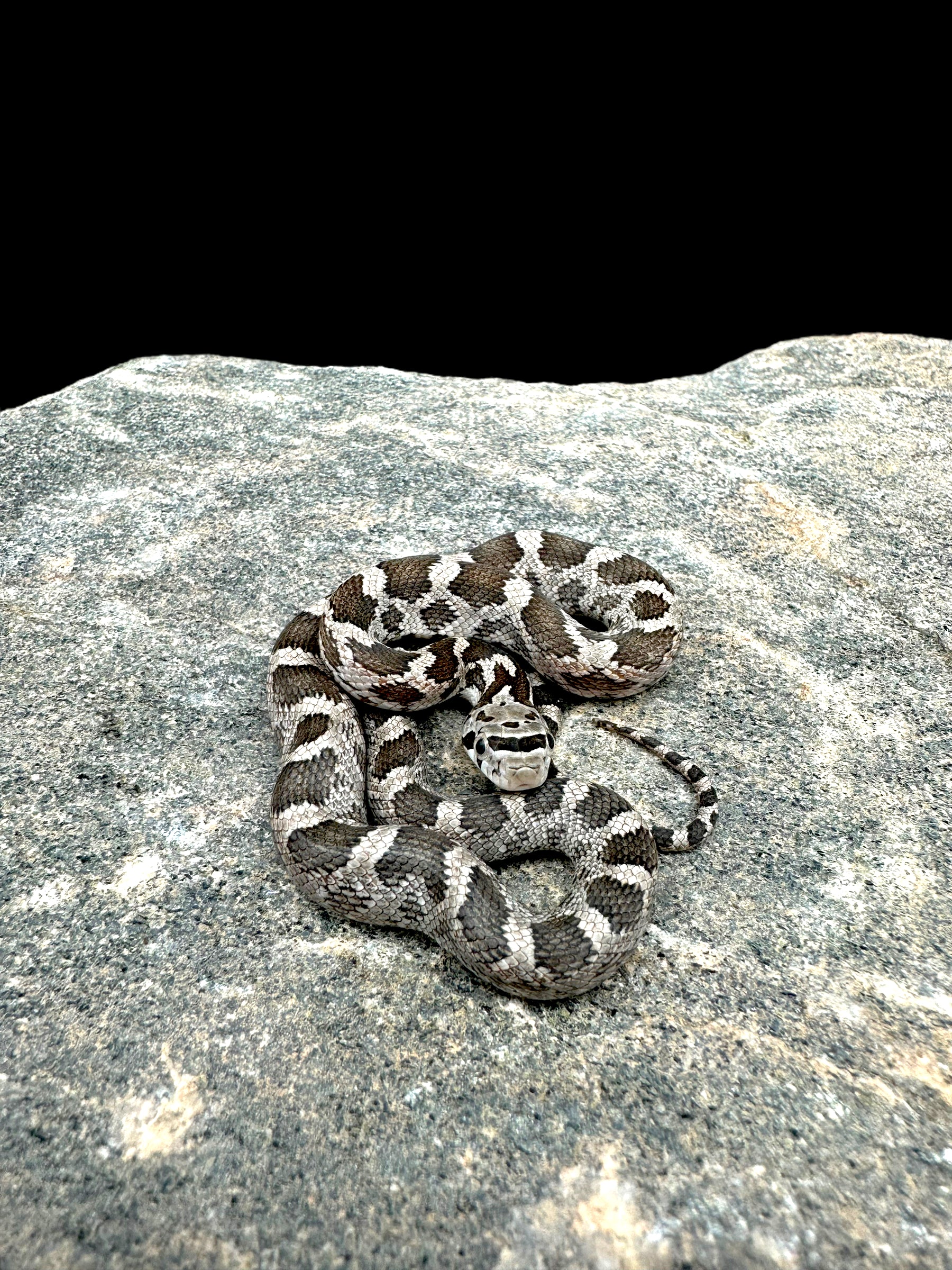Avis de non-responsabilité concernant les photos
Description
Texas Rat Snake (Normal)
Scientific Name: Pantherophis obsoletus lindheimeri
Common Name: Texas Rat Snake
Species Overview
Size: Adults typically reach 4–6 feet (1.2–1.8 m) in length, though some large individuals can exceed 7 feet (2.1 m). They have a lean but muscular body and slightly keeled scales.
Appearance: The Texas Rat Snake is a bold, highly variable subspecies known for its rich mix of earthy tones and rugged patterning. Base coloration ranges from light tan to grey or brown, overlaid with darker blotches that extend down the back and sides. Many individuals exhibit faint reddish or orange highlights, particularly along the flanks or face. The head is broad and expressive with dark eye bars, and the belly is pale with grey checkering. This natural variation gives each specimen a distinct look, even within the same region.
Distribution: Native to the south-central United States, primarily Texas, Louisiana, Oklahoma, and parts of Arkansas.
Habitat: Texas Rat Snakes inhabit forests, grasslands, rocky outcrops, and agricultural areas across their range. In captivity, they thrive in naturalistic terrariums with soft substrate, climbing branches, and secure hiding areas.
Behaviour: Texas Rat Snakes are diurnal to crepuscular and are highly active hunters. While they can be defensive when young, they typically calm with consistent handling and make alert, engaging display snakes.
Captive Care
Enclosure: Provide an enclosure at least 4 feet × 2 feet × 2 feet for adults, with larger preferred. Include branches for climbing, multiple hides, and a spacious floor area for movement. Use a soil or coconut-fibre-based substrate to support moderate humidity.
Temperature & Humidity: Maintain a daytime gradient of 78–86°F (26–30°C) with a basking area around 90°F (32°C). Allow nighttime drops to 70–75°F (21–24°C). Keep humidity between 45–60%, with occasional misting.
Diet: Feed frozen-thawed rodents every 7–10 days for juveniles and every 10–14 days for adults.
Behaviour in Captivity: Texas Rat Snakes are intelligent, curious, and strong climbers. They are active display animals that benefit from environmental enrichment and handling routines.
Special Considerations: Hardy and adaptable, Texas Rat Snakes are excellent for both beginners and experienced keepers looking for a large, interactive colubrid.
Genetics Note
Texas Rat Snakes exhibit significant natural variation across their range. Colour can shift from bright orange or reddish tones in eastern regions to grey or almost black in western populations. In captivity, several morphs have been selectively bred, including Leucistic (recessive), Scaleless (recessive), and Anerythristic (recessive) forms. Most wild specimens, however, display the typical blotched pattern with natural regional colour differences.
Species Summary
The Texas Rat Snake (Pantherophis obsoletus lindheimeri) is a hardy, intelligent, and visually diverse colubrid admired for its adaptability and strong presence. With its mix of colour variation and robust personality, it stands as one of the most iconic snakes of the southern United States.

